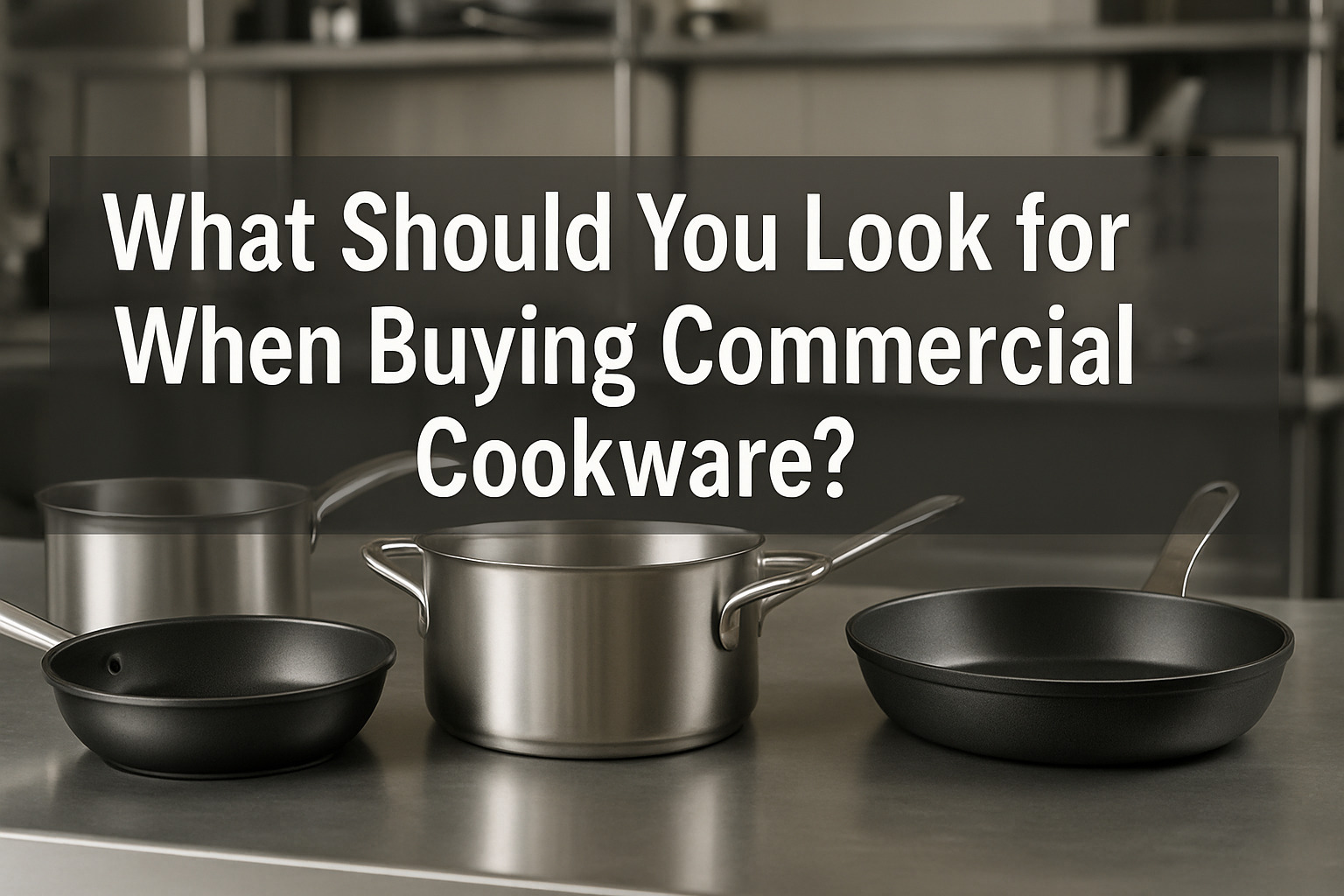What Should You Look for When Buying Commercial Cookware?

When purchasing commercial cookware, it’s essential to choose products that offer durability, excellent heat distribution, and material quality. Stainless steel and aluminum are popular choices in professional kitchens due to their ability to withstand heavy use and provide even cooking temperatures. Ensure the cookware is compatible with your existing commercial kitchen equipment, including gas, electric, or induction cooktops. Look for cookware that is easy to clean and maintain, reducing downtime and promoting food safety. Non-stick coatings can help with easy food release but ensure they are safe for commercial use
When it comes to running a successful food business, the importance of high-quality commercial cookware cannot be overstated. Unlike household cookware, commercial-grade pots, pans, and utensils are designed to endure the rigors of a busy kitchen. But with so many options on the market, how do you know what to choose? Here’s a quick guide to help you make the right investment.
1. Material Matters
Commercial cookware is available in various materials like stainless steel, aluminum, and cast iron. Stainless steel is known for its durability, resistance to rust, and non-reactive properties—ideal for cooking acidic dishes. Aluminum offers excellent heat conductivity but needs a protective coating. Cast iron, while heavy, retains heat well and is perfect for searing.
2. Heat Conductivity and Distribution
In a commercial setting, you need cookware that heats quickly and evenly. Poor heat distribution leads to inconsistent cooking results. Multi-ply (clad) cookware, which often features layers of aluminum or copper between layers of stainless steel, is a reliable choice for professional kitchens.
3. Durability Under Pressure
Busy restaurant kitchens run long hours, so the cookware must be able to handle daily wear and tear. Look for products labeled as “heavy-duty” or “professional-grade,” and consider brands that offer warranties for added peace of mind.
4. Ease of Cleaning and Maintenance
Time is money in a commercial kitchen. Choose cookware that’s easy to clean—dishwasher-safe options or non-stick surfaces can save a lot of time. Avoid cookware with intricate designs that trap food residue and increase cleaning time.
5. Compatibility with Cooking Equipment
Ensure that the cookware is compatible with your current kitchen setup—especially your stove type (gas, induction, or electric). Induction-ready cookware must have a magnetic base, which not all stainless steel pans offer.
6. Handle Design and Safety
Ergonomically designed, heat-resistant handles make a huge difference when handling hot pans. Riveted or welded handles offer greater stability and reduce the risk of accidents in a high-paced environment.
7. Size and Versatility
Choose the right sizes based on the volume of food you prepare. It’s best to have a mix of small and large pans to accommodate various cooking tasks. Stackable designs also help save valuable kitchen space.
Conclusion:
Investing in the right commercial cookware is essential for smooth kitchen operations and consistent food quality. From material choice to heat conductivity and safety features, every detail plays a role in your kitchen’s efficiency. When choosing your cookware, think beyond the pan—consider the entire setup of your kitchen equipment for restaurants to ensure everything works seamlessly together.


